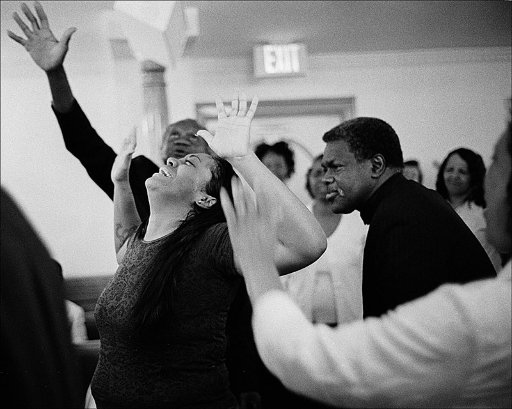Apropos the intimacy of the Kertesz polaroids, there is something about that way of taking pictures
(specifically the SX-70 and integral film) that lends itself to the rendering of an emotionally
intimacy between photographer and subject. On a purely technical level, both camera and film invite
closer focus. In spite of its ingenious construction as a folding SLR, the combination of camera and
film is not particularly optically successful. Having the light pass through a 4 element f.8, bounce off a
dusty mirror and pass though a thick layer of tough protective plastic before it reaches the emulsion,
is more of a service to convenience than to photographic quality. However, it's characteristics of
that very convenience that make photography with the SX-70 so inviting of intimacy. Everything from its
sleek shape, the spindly - seemingly vulnerable construction, the clunky way it opens and closes, and
superbly long-lasting quality, to the unique character of "instantaneousness" of the
integral film, dictates a way of picture taking so completely different from both roll film and digital.
SX-70 pictures were never cheap. Each picture is taken after much consideration. Color was
always unpredictable, though mostly warm in some way, and now invariably faded. With no
way of duplication, each photograph is absolutely unique. And with the rather dismal sharpness
and resolution, only the most well lit and clear-skied landscapes work. The rest is close focus, inviting
attention to framing, lighting and a closer relationship to the subject.
It still is, with a very keep consciousness of the character of that whole process that one picks up
the SX-70 when an emotionally evocative scene presents itself:
This is but a poor representation of my earliest friend. (He was born in the late 1930's, spent the first
lonely months of his life at a fairground until won by my older cousins who gave him to me more than 60
years ago.) The master of Polaroid intimacy was of course Andrei Tarkovsky:
http://tinyurl.com/yel96hw It is said that he always carried an integral film camera, much as
we have some form of digital camera upon our persons at all times.
As an aside, the SX-70 (along with Polaroid) is one of the icons of US design, like the DC-3, Eliot Noyes'
IBM Selectric and the NeXT Cube computer. Charles and Ray Eames made this wonderful film to introduce the
SX-70 in 1972:
http://www.youtube.com/watch?v=96Wzv-vgfsk In itself a remarkanle piece of design that
enhances the unfortunate cult status of the camera.








